| Revista Umělec 1999/5-6 >> Anger and Appropriation | Lista de todas las ediciones | ||||||||||||
|
|||||||||||||
Anger and AppropriationRevista Umělec 1999/5-601.05.1999 Keiko Sei | focus | en cs |
|||||||||||||
|
"Anger interests me. Probably because it reveals not-masked part of people. And probably because I grew up in a Southern tropical island where people are known to have “healthy mind“, and I had never seen any anger in their society. Anger interests me more when it turns into some product but a weapon; an art work, a song, a theory, etc. Here I take three examples of angry products.
1988 In the Dutch media art magazine Mediamatic vol. 3 #2, there was an article by Glenn O’Brien, renown Art forum art critic, about the Dutch artist Rob Scholte. It talked about one of Scholte’s art pieces “Dommelsch Wordt’t Helemaal.“ in which the artist used Dommelsch beer advertisements, collaged them to make them into an art piece. Here is an excerpt of the article. When I think about the possibility today of what used to be called an art movement, I think about what ROB SCHOLTE calls Business Art. I think that ROB SCHOLTE saw that art was losing large areas of its former view. As much as ROB SCHOLTE is a creature of the art world (and of media exploitation), he never rejects the commercial art world. He has a big heroically inclusive concept of art and in a lot of ways he is the only Pop artist who lives up to Pop’s platform. You could say that Business Art had to happen. (Presuming the world were to continue.) But the actual appearance of Business Art still seems radical and Dada -like in its deep and mysterious pizzazz. I think what ROB SCHOLTE sees in Business Art is power, not just collecting-class power but the kind of power that comes from a positivist, ambitious approach. I think he sees Business Art as a means of escape from the tragic tradition of art declaring itself dead and dead again. Business Art subverts that tragedy through deus ex machina surprise tactics. It is about escapism, about taking the easy way out, but so was some great art of the past. Art before ROB wasn’t all the dangerous leap that we sometimes expect of art that is like art, art that buys into the tragic idea of art history. By serving commerce, commercial art is able to attain a corporate, communal “I“. An I like the I of the Order of Assassins, or the knights of Templar, or the Ras Tafari. - The corporate artist is immune to assassination, literal or figurative, whether by ideological enemies, rival artists, or dealers and collectors with a vested interest. - The corporate I is superior to “we“. We is a euphemism - We is ex cathedra. I is divine. An Articulate article of a celebrated art critic. When a friend of mine, however, told O’Brien that he’d seen his article in the Dutch magazine, he said he’d never written anything for the magazine. It turned out that the editor of the Dutch magazine, who respected (or criticized) Scholte’s usual style of appropriation (the artist uses art works and images that exist already), appropriated the beer advertisements as if Scholte did, and also appropriated O’Brien’s text on Andy Warhol, changed the American artist’s name into the Dutch artist’s name (capitalized in the text), and printed it without his consent. O’Brien was very angry and send the following letter to the editor: ....and the editors responded: ....and O’Brien responded: (scan in the following column). ... and the back cover of the same issue the letter was printed showed: (scan in the following column). Some time later, a friend of mine met O’Brien again in New York. When he asked him “So what happened to the story?“, O’Brien clicked his tongue and said “These Dutch!“ 1996 In the latest CD of Tony Conrad entitled “EARLY MINIMALISM“, there was an intense CD booklet mostly written by the artist himself. In there was a text about recording. 1. Recording... ...as a system for the storage of sounds, fascinated me from the first — as in THREE LOOPS (* one of the early minimalism music that he performed). You make a record of a sound; it is archived for some period; and then it is reproduced. In EARLY MINIMALISM the time frame of “archiving“ is a historical interval—about twenty years. The “recording“ was effected by and through the composite cultural processes of music history, and the “reproduction“ is my act of composition. In notated music, written records might be said simply to “archive“ the sound for “reproduction“ by a later performer, were it not or the authoritarianism intrinsic in all writing. Writing always represents, intercedes, announces. Writing conveys authority: the expectation of power, and of force. ] The historical interval of some twenty years that is mentioned in the text was for Conrad also the period of anger. Conrad has been influential in “minimal“ music since he started creating and performing the music with the group of DREAM MUSIC with John Cale, Angus McLise, La MonteYoung and Marian Zazeela in 1962. Most of the music performed by the team, however, has been denied access to be played over thirty years as Young and Zazeela permitted very little to be played and Young permitted the rest of the group to have some copies of the tapes under the condition that each of them sign an agreement that La Monte Young was “the composer“ of the “pieces“. Conrad thus has been denied to play his own music since then. At the same time, the principle of “minimalist“ music such as dismantling the hierarchy of a composer the authorship or dismantling the Western idea of “high“ culture, has collapsed as well. After decades of dormancy in minimal music he has directed his activities more to video, recently we have seen a revival of Conrad in the field of music and film (he is the creator of the historical flicker film). In the CD “EARLY MINIMALISM“, one of the centers of the revival, we find a lot of his ‘anger‘ towards La Monte Young which indicated that the very anger was probably the impetus of the whole project: — By 1987, I realized that La Monte Young wanted me to die without hearing my music. (pp26) — Later (* after the early ’60s when the group was performing), Young, in his heyday of upper crust patronage, when he was pulling in millions in oil money, isolated himself and his Pythagorean coterie notoriously (and palatially) at 6 Harrison Street in New York ... and stationed a Pinkerton guard at the door. Occasionally, as at an eighteen century European court, there would occur an entertainment, at which outsiders would be admitted. Visitors were to be submissive, as in a mosque; shoes were removed, and a sanctimonious air was maintained. (pp. 37.-38) — ...This is the weight of biography: that by reason of our participation in its formation, I and the other Dream Music collaborators are singularly empowered with direct access to the music. In effect, La Monte Young’s sealing of our audiotape archive insured that the cultural legibility of Dream Music by others would always be understood as indirect... (pp. 60) — What they announce most straightforwardly is their appropriation of my own early performance work. Appropriation is a slippery strategy as it applies to performance. Stephen Prina has mounted performances of Schoenberg as his own work — but it could be easy to misinterpret this as what pop music calls a “cover“. And if you “appropriate“ performance-based work whole (a play, for instance), you risk being said to be simply “doing a performance“ of it— unless the original work is totally inaccessible, as it is in my own case. ... Appropriation is a general structural principle of post modern culture, a relational principle that seemed for a time to give theory a toe-hold in the bulwark of the dissolving arts hierarchy. Appropriation functions to re-label an artifact which is already oriented within the cultural plane. In my case, though, the appropriated artifact is absent: the recordings of early minimalism by the Dream Music group have been suppressed... (pp. 66.-67.) These are only one small part of the swearing tone that goes through the whole CD booklet. However, these swear-words are supported by his belief in what the minimalist music was supposed to achieve, in other words by perceiving his anger we can understand more about the structure and philosophy behind the particular genre of music that in the early ’60s challenged the convention of music making and left the significant legacy in the history of music, which today corresponds to a great deal with post modernity. Moreover, just like Glenn O’Brien’s ping-pong with the Dutch magazine became a nice art piece about appropriation itself if they are hung on the wall of a museum as they are, in the end Conrad’s anger created the piece of theory of contemporary music. In May this year there was a symposium in Bauhaus Dessau entitled “Brave New Media World“ in which I spoke about the necessity of archives. This is responding to the current tendency, however scattered and largely unnoticed yet, that has been slowly developed by artists and curators: the successful exhibition of “Translocation“ at Generali Foundation in Vienna early this year that dealt only with video archives, recent fascination of re-making such as the re-make performance of Vito Acconci’s 70s performance by Mike Kelley and Paul McCarthy or re-make performance of Vito Acconci’s 80s performance by Thai artist Roarbeer Suwannaphong, and the recent technical break-through of music and video archive on internet, which everybody can have access to, named “Open Video Archive“ developed by Berlin based Frank Kunkel and Thomax Kaulmann. In there I quoted the “recording“ text of Conrad. As we all now, his calling for the need of archive has its own reason. The only witness that can prove who performed what and who made what in the Dream Music is Arnold Dreyblatt who was working at a music archive in New York when the DM was performing actively. Dreyblatt, who is also in this recent renaissance of early minimalism and post-rock, himself later started to develop a series of art project that deal with archive. The largest project of all, “Memory Arena“, a combination of installation and performance that has been presented in several cities of Europe in the past three years, is made of cold, bureaucratic office-like archive and data-boxes such as computers and projectors that show only the names and the data of people in the “Who’s Who in the Central and Eastern Europe in 1933“, whose names are also read by performers and participants of the project. Video Curator Chris Hill quoted Robert Horowitz, the former internet coordinator for the Open Media Research Institute in Prague, as saying that the people who would be calling shot in the future would be gatekeepers rather than artists and authors. Gatekeepers of archives and libraries that know what was happening. Gatekeepers that know who is appropriating who’s what. At the end of the presentation, a Dutch media activist spoke out loud “Yes! From now on, we all have to become archivists, forget about artists!“ So who’s angry now? Until recently it has been the white male in America who supposedly lost legitimacy of their power and existence after the ‘invasion‘ into their territory by blacks, women, any other minorities and P.C. They have been singing an Eagles song that goes: Complain about the present And blame it on the past I’d like to find your inner child And kick its little ass Now this is shifting. Angry Young Men and Women in the ’90s (AYMW ’90s) are people of color in Europe: they are frustrated and angry about never-changing arrogance of white Europeans after so many foreign emigrants contributed and enriched their society and culture. AYMW ’90s, however, are no longer naive emigrants but they have substantial financial means, and are well informed about new technology and new media and carefully watch who is controlling media and who is building new hierarchy. Aesthetics has been changed as their aspiration develop. They no longer appreciate a European city as beauty but see it as a unbearable symbol of oppression and exploitation of other cultures. With the change of mental landscape, landscape paintings as well as other art forms will start to be revised and the new wave of landscape art created under completely different perspectives by ‚angries‘ is presumed. Here I take an example of Roarbeer Suwannaphong as one of the rising AYMW ’90s. 1999 ~ Miss Suwannaphong, who is currently active both in Europe and Thailand, was born in Ban Nong Bua Koke, North East Thailand, the poorest part of the country. Near her hometown is the birth place of Thao Suranari, the Thai Jeanne d’Arc who saved the town of Nakhon Ratchasima from Laotian invaders in 1826. In the central square of the town there is a huge statue of Suranari which everybody in town admires and prays to. Growing up admiring the brave woman, Miss Suwannapong decided to become an artist whose goal is to have larger political implication in art than the Western art that she had seen and whose current theme was to be critical on the white male invasion on Thailand for sex reason. When she was in New York for a short visit she saw the performance of Vito Acconci on video in which Acconci set up a car with a megaphone in five city squares in Holland from which a woman’s voice announced as: Ladies and Gentlemen, Is there a terrorist in a crowd? I have come for you terrorist. Bring me your terrorist. I can look at you terrorist, straight in your eyes. Welcome, welcome, terrorist. Target for terrorist. I promise you this time we are ready for you. Bang your heads against the wall. A shelter for terrorist. I promise you, every terrorist will have a home here. Welcome, welcome. Free food for a terrorist. I promise you, no terrorist will ever go hungry. Pardon me now while I speak to normal people. Ladies and gentleman, Terrorism for everybody. Terrorism without blood. Terrorism with no consequences. Pardon me now while I speak to myself. I swear to you I’m a human. I swear to you I’m only a human. I swear to you I’m alive again. I swear to you can’t hurt me anymore. I’m just a machine. Forget about me, forget about me, while I speak to the normal people. Ladies and Gentlemen, Everybody, take a terrorist. Everybody, take in a terrorist. Take a terrorist with you under our roof .... Excited, Miss Suwannaphong wanted to buy the video but the gallery owner demanded too much money from the poor Thai artist. So she decided to remake the performance on her own, and found out that the best way to do it without money is to transcribe the text of the speaker’s voice and put it on the internet. She then found the ideal place in cyberspace - De Digitale Stad or the Digital City in Amsterdam which is made virtually of different squares such as political square and culture square. She thus released the text on each of the squares as a performance. This case is not all about appropriation of Acconci’s text and performance, but more about the appropriation of the landscape of the city squares where the voice was heard. She changed the unidentified voice into that of minority. I announced the rise of Angry Young Men and Women in the ’90s and a prominent German newspaper took the case. So now it is official. I am thus recruiting angry young men and women of color in Europe. Please let me know if you find any angry colored, preferably those who have creative mind. "
01.05.1999
Artículos recomendados
|
|||||||||||||
|
04.02.2020 10:17
Letošní 50. ročník Art Basel přilákal celkem 93 000 návštěvníků a sběratelů z 80 zemí světa. 290 prémiových galerií představilo umělecká díla od počátku 20. století až po současnost. Hlavní sektor přehlídky, tradičně v prvním patře výstavního prostoru, představil 232 předních galerií z celého světa nabízející umění nejvyšší kvality. Veletrh ukázal vzestupný trend prodeje prostřednictvím galerií jak soukromým sbírkám, tak i institucím. Kromě hlavního veletrhu stály za návštěvu i ty přidružené: Volta, Liste a Photo Basel, k tomu doprovodné programy a výstavy v místních institucích, které kvalitou daleko přesahují hranice města tj. Kunsthalle Basel, Kunstmuseum, Tinguely muzeum nebo Fondation Beyeler.
|








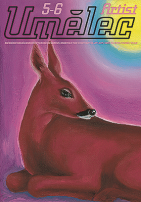









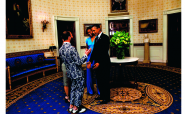
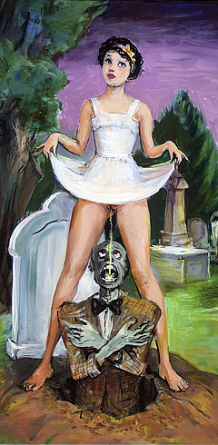






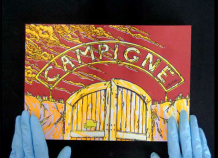






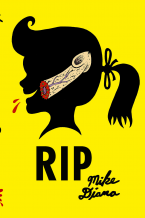
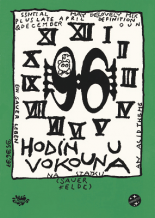


 We Are Rising National Gallery For You! Go to Kyjov by Krásná Lípa no.37.
We Are Rising National Gallery For You! Go to Kyjov by Krásná Lípa no.37.
Comentarios
Actualmente no hay comentariosAgregar nuevo comentario